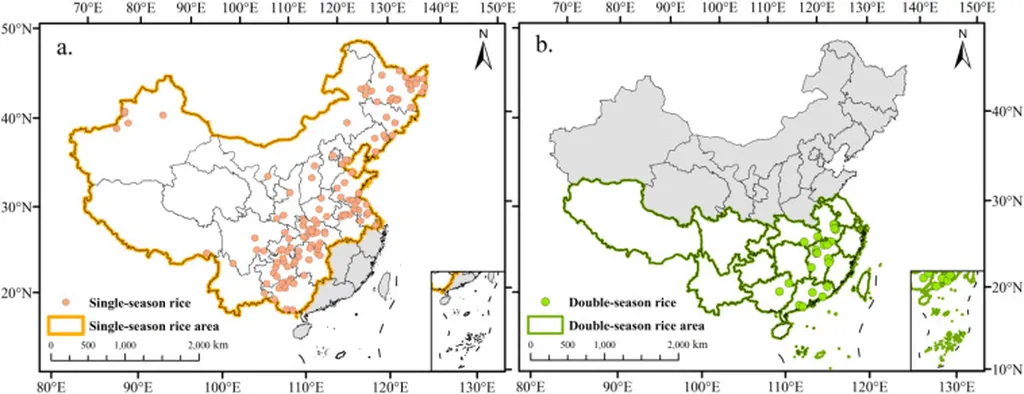In the heart of China, where the world’s largest rice production unfolds, a groundbreaking study has shed new light on how climate change is reshaping the suitability of rice habitats. The research, published in *Ecological Indicators*, reveals that warming trends are driving significant shifts in the cultivation feasibility of single (SR) and double cropping rice (DR) systems, with profound implications for global food security and the agriculture sector.
The study, led by Deliang Sun from the School of Geography and Tourism at Chongqing Normal University, employed a novel framework combining machine learning and ecological niche modeling to assess historical and future shifts in rice habitat suitability. The team used the MaxEnt model to evaluate potential habitat suitability under natural constraints and the XGBoost algorithm to assess potential cultivation feasibility.
The findings paint a complex picture of change. High-suitability areas for DR, accounting for 11.1% of the studied regions, are concentrated in central and southern China. In contrast, SR suitability, slightly higher at 11.3%, is more widely distributed across key agricultural basins and plains. Notably, SR systems were found to be more climate-sensitive than DR systems.
“Warming is driving a northward and westward expansion of DR areas, although with reduced suitability,” explains Sun. “SR systems, on the other hand, remain stable in the short term but are projected to shift toward higher latitudes under prolonged warming.”
These shifts have significant commercial implications for the agriculture sector. As climate change alters the suitability of traditional rice-growing regions, farmers and agribusinesses will need to adapt their strategies to maintain productivity. The study’s spatially explicit insights could guide the optimization of rice cultivation strategies, helping to mitigate warming impacts and enhance climate resilience.
The research also highlights the importance of integrating ecological and agronomic factors in assessing habitat suitability. By combining ecological niche modeling with agronomic feasibility analysis, the study provides a robust framework for climate-resilient crop system design. This approach could be applied to other crops and regions, offering valuable insights for global adaptation planning.
As the world grapples with the challenges of climate change, studies like this one are crucial for informing policy and practice. By understanding and anticipating shifts in crop suitability, we can better prepare for the future of food security. The research not only advances our scientific understanding but also provides actionable insights for the agriculture sector, underscoring the importance of climate-resilient strategies in ensuring global food security.

